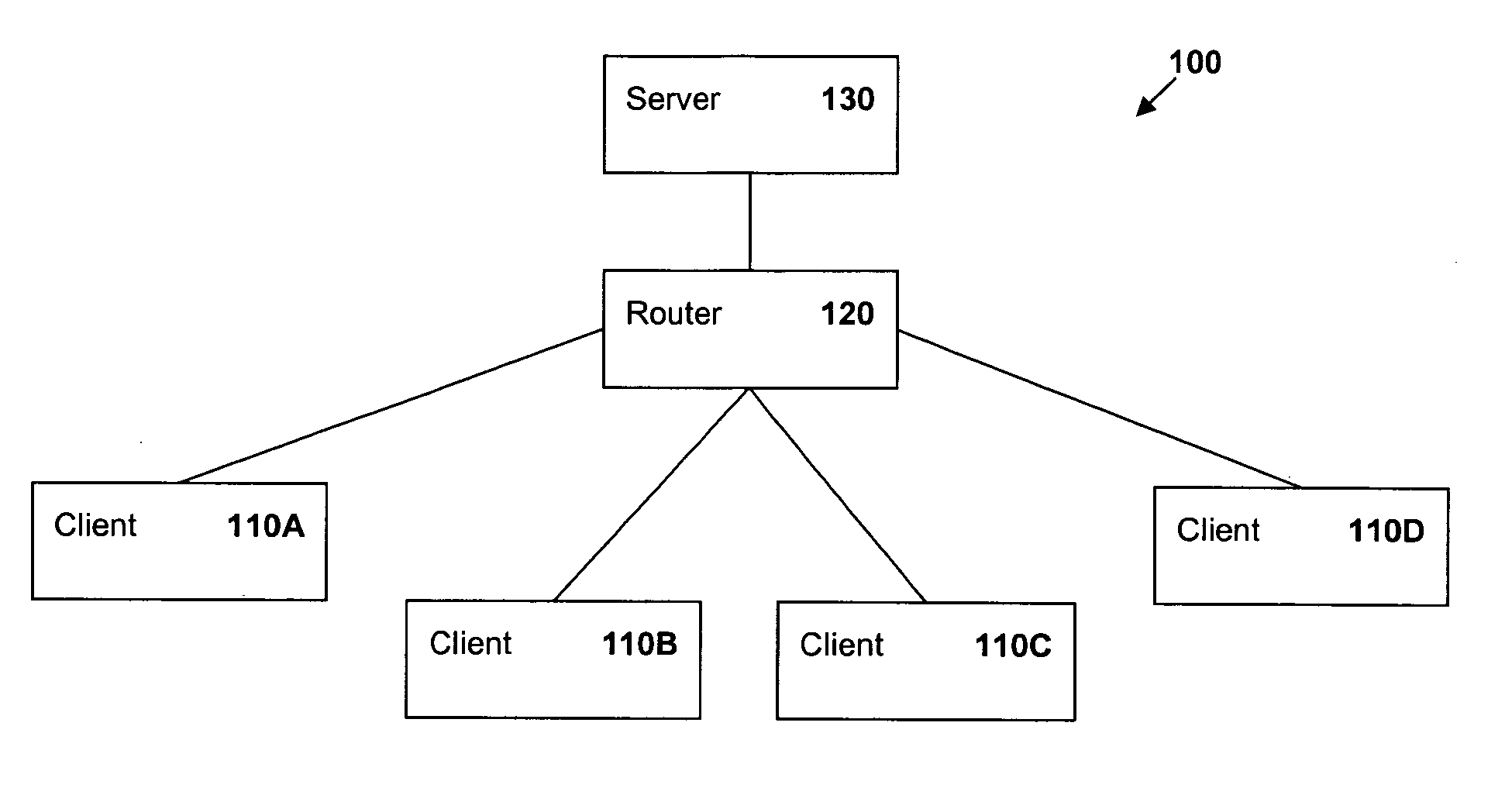Redistribution of operating environments for the redeployment of grid clients
a technology of operating environment and grid client, applied in the field of redistribution, can solve the problems of large amount of computing resources available, system cost prohibitive for all but the largest businesses, and pc client that is already in use severely affecting processing performance, both for the end user and the grid application, and achieve the effect of reducing idle computing resources on the network
- Summary
- Abstract
- Description
- Claims
- Application Information
AI Technical Summary
Benefits of technology
Problems solved by technology
Method used
Image
Examples
Embodiment Construction
[0014]FIG. 1 is a block diagram of a network 100 of the present invention in a client-server mode. A plurality of client devices 110A, 110B, 110C and 110D (collectively referred to herein as 110) are coupled, such as through a router 120 or other similar networking device to a server 130. The invention may also be implemented with other types of networks, including the internet.
[0015]FIG. 2 is a block diagram of one of the client devices 110A (representative of all client devices 110) of the present invention operating in the client-server mode of FIG. 1. In the client-server mode, the client device 110A executes software applications 112 under a local operating system 114. For example, the client device 110A may be a conventional desktop or notebook personal computer (PC) operating under a Microsoft® Windows® operating system although other types of computers, such as workstations, and other operating systems, such as Linux®, may be used. The client 110A also includes one of a var...
PUM
 Login to View More
Login to View More Abstract
Description
Claims
Application Information
 Login to View More
Login to View More - R&D
- Intellectual Property
- Life Sciences
- Materials
- Tech Scout
- Unparalleled Data Quality
- Higher Quality Content
- 60% Fewer Hallucinations
Browse by: Latest US Patents, China's latest patents, Technical Efficacy Thesaurus, Application Domain, Technology Topic, Popular Technical Reports.
© 2025 PatSnap. All rights reserved.Legal|Privacy policy|Modern Slavery Act Transparency Statement|Sitemap|About US| Contact US: help@patsnap.com



